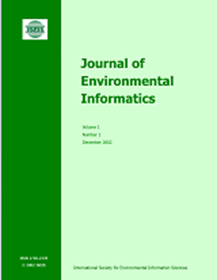通过控制副产品的可持续和灵活的生产来减少污染
IF 5.4
1区 环境科学与生态学
Q1 ENVIRONMENTAL SCIENCES
引用次数: 0
摘要
每个制造系统都会产生有毒的副产品,对社会和环境造成有害影响。因此,污染控制当局在改善社会和维护清洁绿色环境方面的作用变得越来越重要。因此,本研究的目标之一是开发一种可持续的智能制造模式,减少浪费和控制污染。本文讨论了在不精确的市场条件下,具有部分积压和返工的柔性生产过程。本文通过考虑污染控制成本,提出了两种不同的可持续生产模式。为了提高模型的适用性,在三种污染控制机制的影响下,研究了具有可变污染成本的可持续生产模型。给出了一种求解方法,包括三个关键定理,以获得最佳的生产率、长度和每周期总成本。本文的新颖之处在于将污染控制成本和污染控制机制引入到一个具有不确定性的灵活、可持续的生产系统中。与其他模型相比,具有可变污染成本的模型似乎更具可持续性,因为在这种情况下,与其他模型相比,污染水平降低了25.5%。实施污染总量控制、污染总量控制与交易、污染税三项污染治理战略,污染水平分别下降34.37%、0.83%和0.62%。对得到的结果进行了敏感性分析,以显示模型的强度和鲁棒性。本文章由计算机程序翻译,如有差异,请以英文原文为准。
Reduction of Pollution through Sustainable and Flexible Production by Controlling By-Products
Every manufacturing system produces toxic by-products that cause a hazardous impact on society and the environment. As a result, pollution control authorities’ role has gained importance for the betterment of society and the preservation of a clean and green environment. As a result, one of the goals of this research is to develop a sustainable smart manufacturing model with less waste and controlled pollution. Here, a flexible production process is discussed under imprecise market conditions with partial backlogging and rework. Two different sustainable production models are presented here by considering pollution control costs. A sustainable production model with variable pollution costs is examined under the influence of three pollution control mechanisms to improve the model’s applicability. A solution methodology, including three critical theorems, is provided to obtain the optimal production rate, length, and total cost per cycle. The paper’s novelty lies in introducing pollution control costs and pollution control mechanisms together in a flexible, sustainable production system with uncertainty. In comparison to the other models, the model with a variable pollution cost appears to be more sustainable as, in this case, there is a 25.5% reduction in the pollution level compared to the other models. Implementing three pollution-controlling strategies, such as pollution cap, pollution cap and trade, and pollution tax, resulted in reductions of 34.37, 0.83, and 0.62% in pollution levels, respectively. A sensitivity analysis of the obtained results is carried out to show the model’s strength and robustness.
求助全文
通过发布文献求助,成功后即可免费获取论文全文。
去求助
来源期刊

Journal of Environmental Informatics
ENVIRONMENTAL SCIENCES-
CiteScore
12.40
自引率
2.90%
发文量
7
审稿时长
24 months
期刊介绍:
Journal of Environmental Informatics (JEI) is an international, peer-reviewed, and interdisciplinary publication designed to foster research innovation and discovery on basic science and information technology for addressing various environmental problems. The journal aims to motivate and enhance the integration of science and technology to help develop sustainable solutions that are consensus-oriented, risk-informed, scientifically-based and cost-effective. JEI serves researchers, educators and practitioners who are interested in theoretical and/or applied aspects of environmental science, regardless of disciplinary boundaries. The topics addressed by the journal include:
- Planning of energy, environmental and ecological management systems
- Simulation, optimization and Environmental decision support
- Environmental geomatics - GIS, RS and other spatial information technologies
- Informatics for environmental chemistry and biochemistry
- Environmental applications of functional materials
- Environmental phenomena at atomic, molecular and macromolecular scales
- Modeling of chemical, biological and environmental processes
- Modeling of biotechnological systems for enhanced pollution mitigation
- Computer graphics and visualization for environmental decision support
- Artificial intelligence and expert systems for environmental applications
- Environmental statistics and risk analysis
- Climate modeling, downscaling, impact assessment, and adaptation planning
- Other areas of environmental systems science and information technology.
 求助内容:
求助内容: 应助结果提醒方式:
应助结果提醒方式:


